Player Profile: Will the real Brian Dozier please stand up?
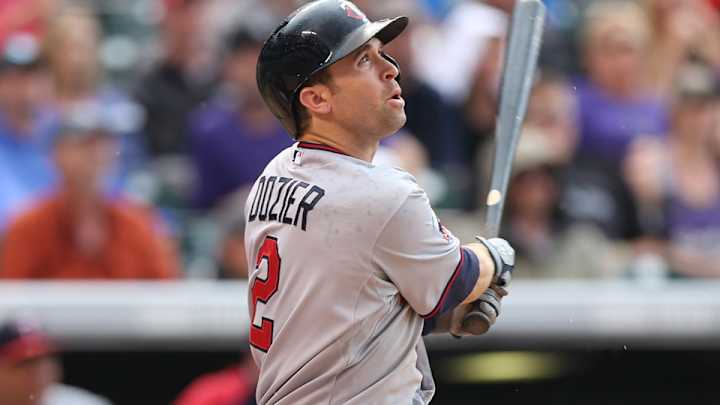
You can learn a lot about players if you strip out their names and just look at the numbers. For example: Let's look at the following anonymous half-seasons and see if we can draw any conclusions that might have hidden behind a name.
Player A: 322 plate appearances, .235/.310/.386, eight homers, 93 wRC+
Player B: 301 PA, .253/.313/.443, 10 homers, 107 wRC+
Player C: 424 PA, .242/.340/.436, 18 homers, 121 wRC+
Player D: 283 PA, .244/.352/.387, five homers, 113 wRC+
Player C is easily the best, and most would rather have B than D, despite D's superior wRC+, which owes primarily to his OBP. Still, their respective OPS numbers are essentially a wash. Meanwhile, Player A stinks, right?
Player Profile: Josh Harrison a big risk after breakout 2014 season
I'm sorry, but this was a slightly disingenuous experiment. Those are not the half-seasons of four different players, but the first- and second-half splits for Brian Dozier in the last two seasons. Those are four pretty distinct half-seasons for the same guy to have consecutively. They also make Dozier one of the harder players to figure this year. Is he a prime source of power at a scarce position? Is he a significant regression candidate? Is he a three-category stud with strong plate discipline?
The truth is he's a little of all those things, but the very real possibility of regression could make him a risky player at his 68.78 average draft position, sandwiched between Prince Fielder, Jonathan Lucroy, Chris Davis and Jason Kipnis.
Let's start with what Dozier has done well in the last two years. Outside of the second half of 2014, Dozier has shown plenty of pop, especially from the second base position — his 41 homers the last two seasons are tied with Robinson Cano for the most among second basemen. Moreover, only Jose Altuve and Kipnis have more than Dozier's 35 steals over the last two seasons, and only he and Ian Kinsler have at least 30 homers and steals in that timeframe. From the standpoint of pure fantasy production, Dozier has been one of the league's best second baseman in the last two years.
Player profile: Corey Dickerson provides power without a huge price
Something Dozier has not done the last two years, however, is hit for a high average. Despite his power/speed combo, his overall .243 batting average has been a serious drag on his owners. But he did suddenly become a patient hitter last year, and that made him much more valuable in OBP leagues. Dozier saw 4.18 pitches per plate appearance, the sixth-highest total in the league. All that discipline helped him tally a 12.6-percent walk rate and an OBP that was more than 100 points better than his batting average. Given that we aren't in the statistical dark ages, you're hopefully in a league that uses OBP or OPS as its rate of choice, so you're getting credit for all those Dozier walks.
All the walks in the world won't matter if the 2014 second-half version of Dozier shows up this year, and there's too much evidence that he will for my comfort. I combed through Dozier's first- and second-half splits to try to find a reasonable explanation for his second-half power outage and finally settled on something that I think does a good job of telling the story.
Below are heat maps for Dozier's slugging percentage by zone for each of last year's halves. Pay particular attention to his performance at the top of the zone, as well as the number of pitches he saw there.
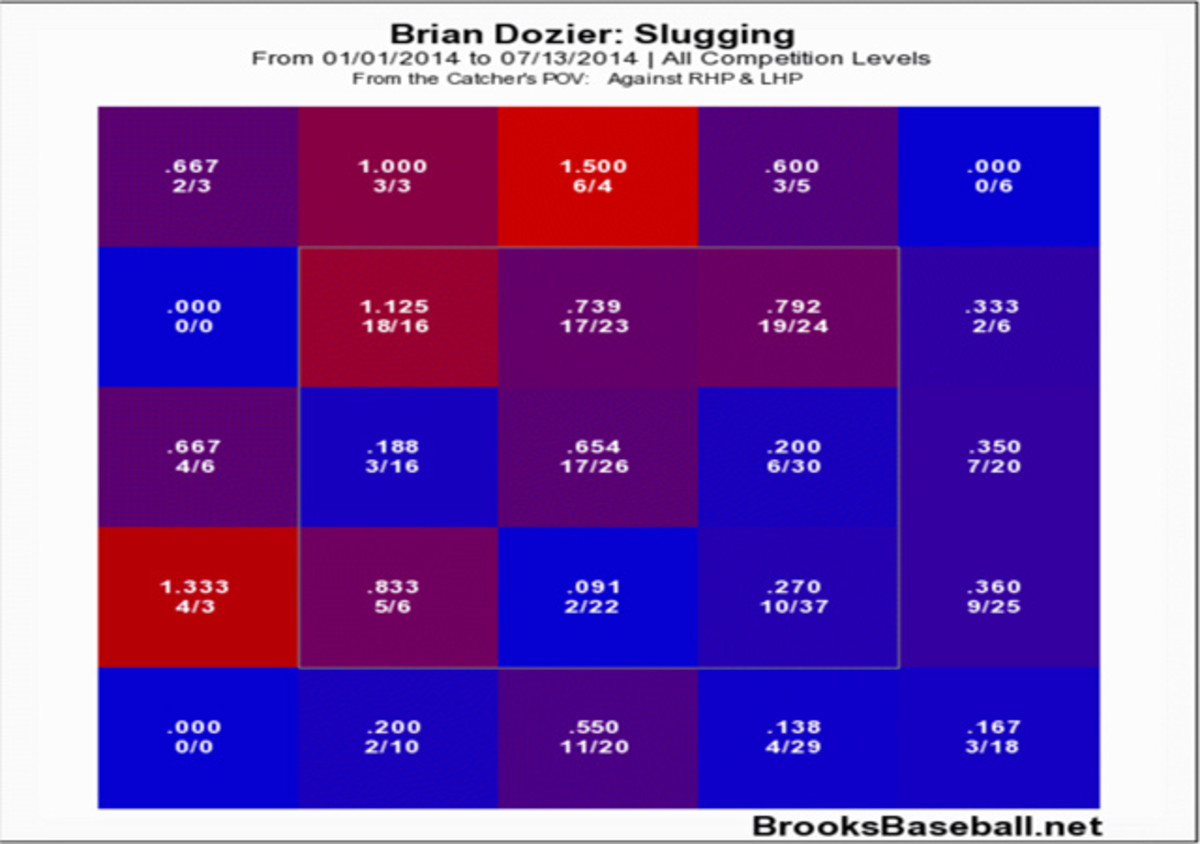
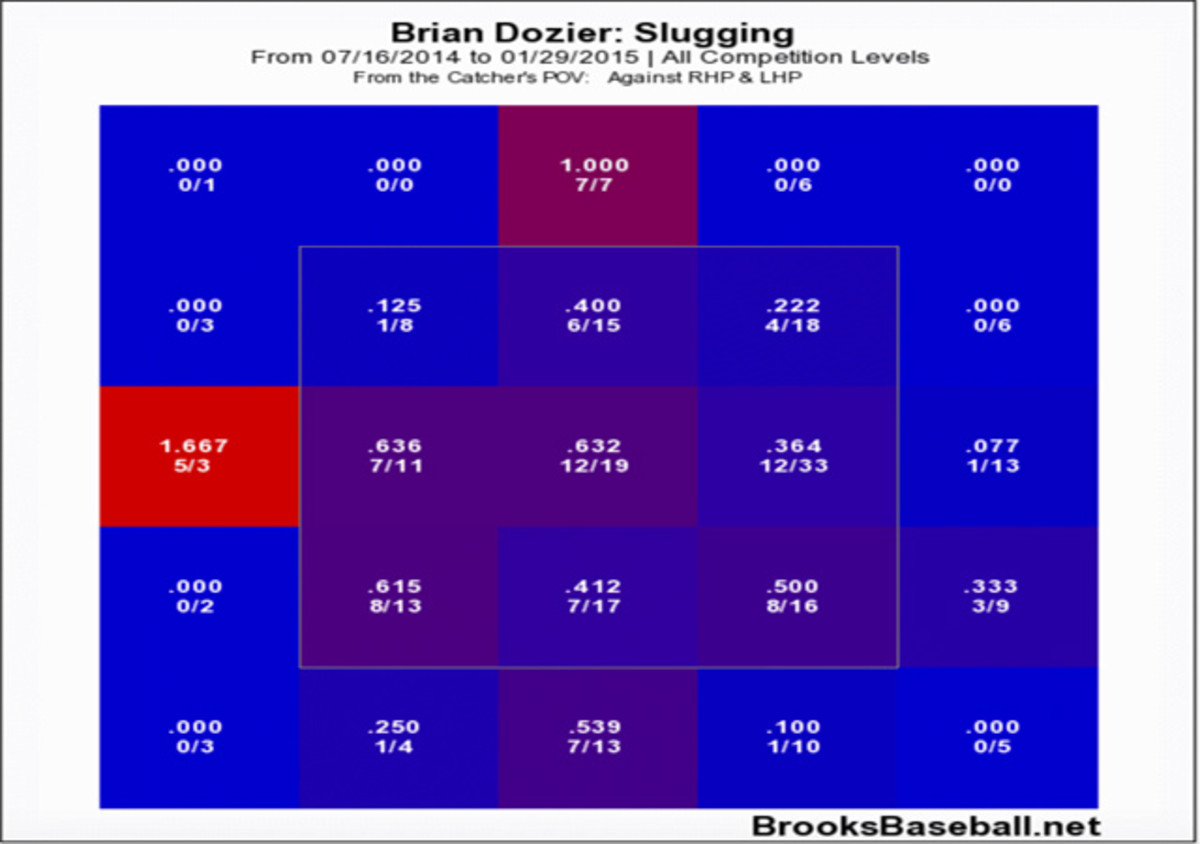
Dozier absolutely tattooed anything up in the zone in the first half, compiling a ridiculous .857 slugging percentages on pitches at his letters. He saw 192 such pitches, with his at-bat ending on 63 of them. Here, we can see him abuse an offering from Robbie Ray at the top of the zone.
That second-half heat map shows that something changed after the All-Star break. However, pitchers didn't really avoid that area of the zone against Dozier. In fact, he saw a greater percentage of pitches in the top-third of the strike zone than he did in the first half. What changed, for whatever reason, was Dozier's aggressiveness against high strikes.
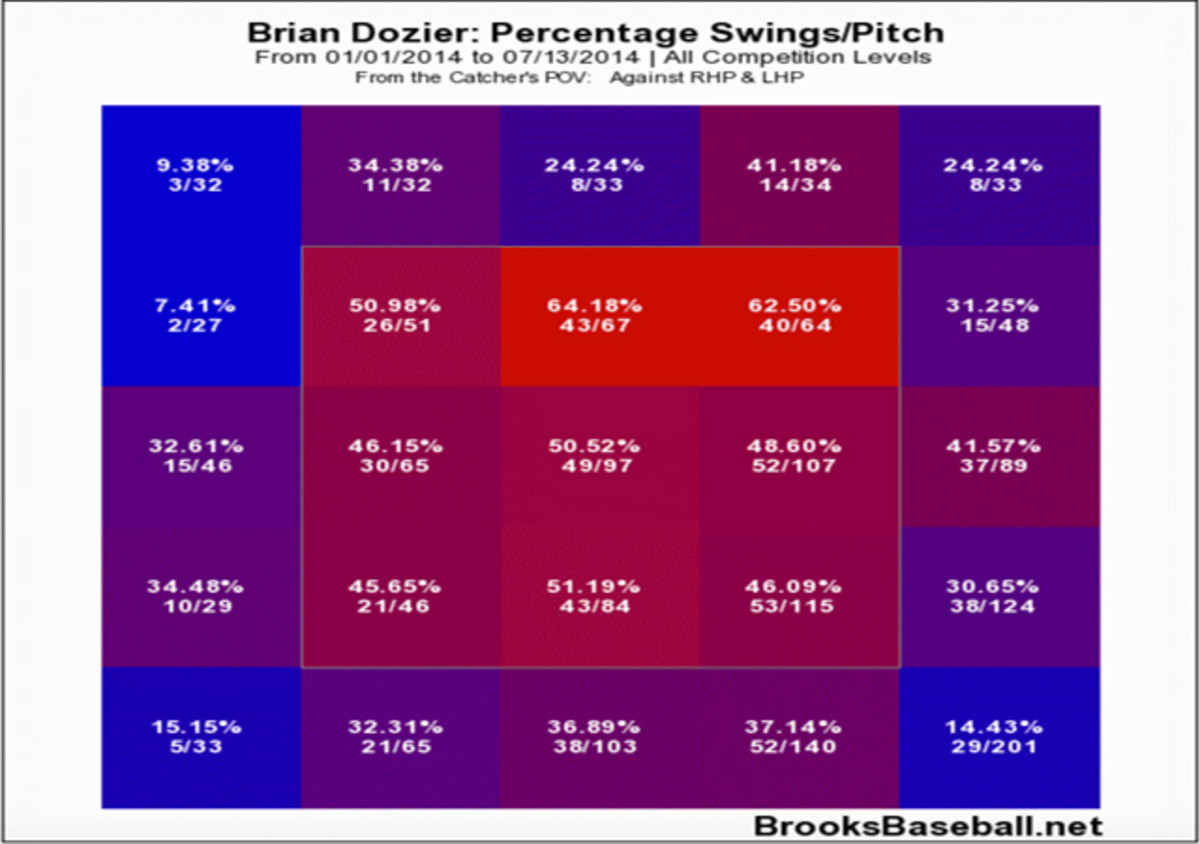
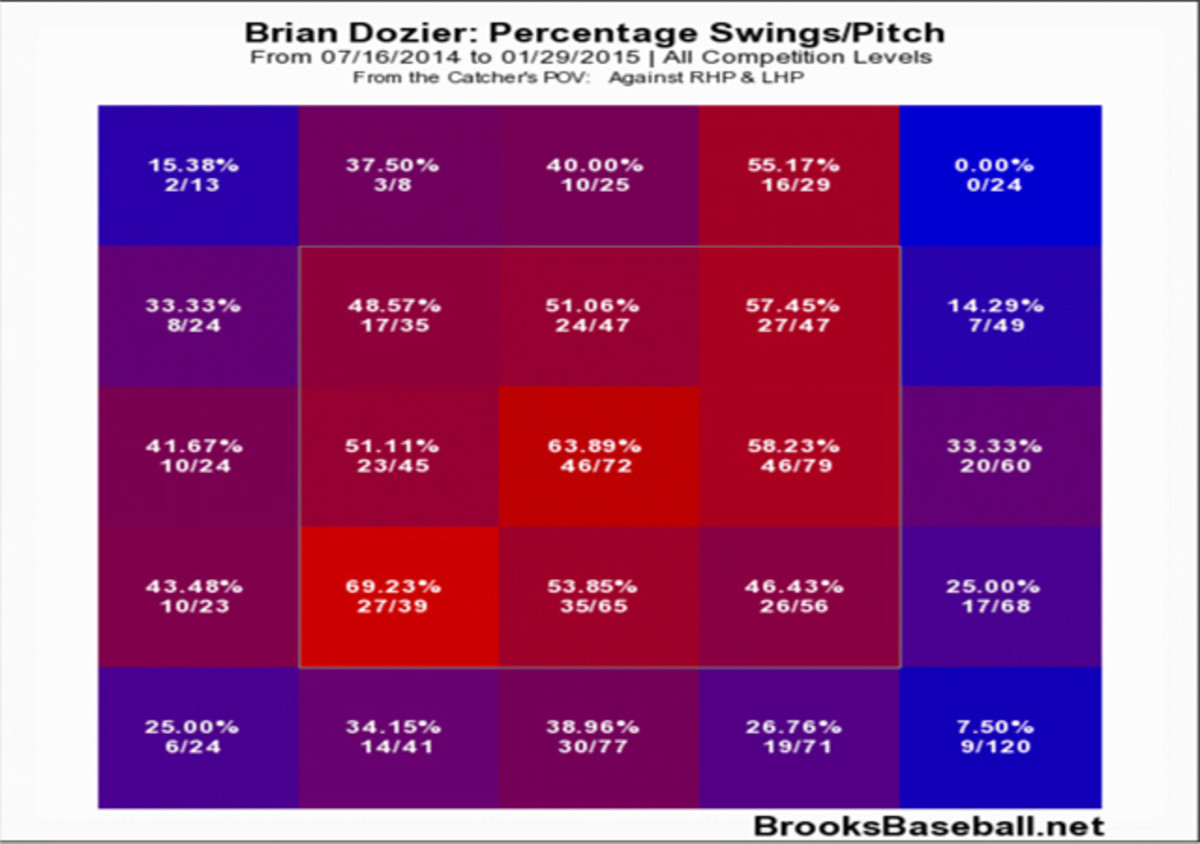
owner, you have to hope he won't let so many high strikes go by this year.
Player Profile: Adam Wainwright may not be as formidable a force in 2015
Finally, even when Dozier was leaving the yard consistently, he wasn't evoking thoughts of Giancarlo Stanton. According to ESPN's hit tracker, Dozier's average true home run distance of 376.8 feet was the second shortest among all players with at least 18 homers. That was down from a still-unimpressive 384.7 feet in 2013. It wasn't just the distance of his homers, either. There's also a very troubling pattern in Dozier's home run spray chart. You should be able to spot it pretty easily.
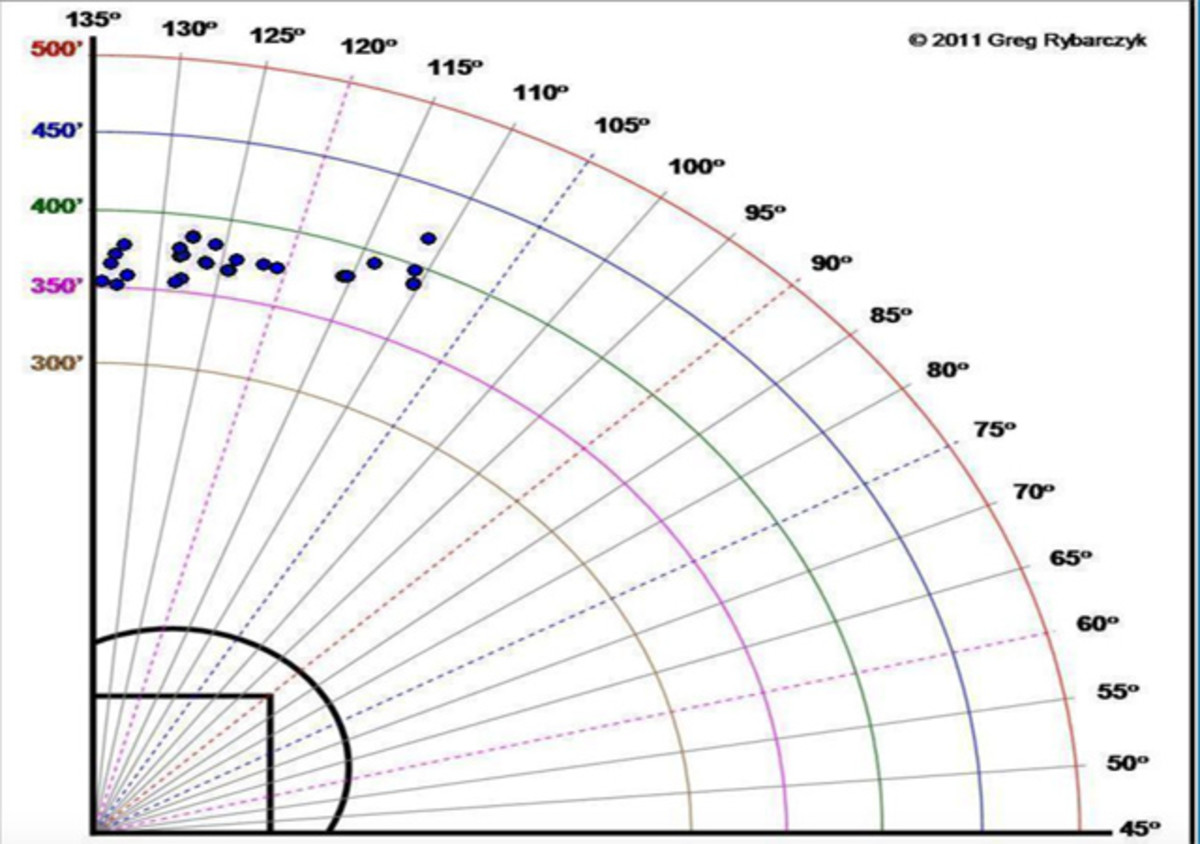
Dozier is a dead-pull hitter on fly balls. Part of that owes to his ability to get on top of high pitches and yank them to left, but it's also going to lead to ugly homer droughts like the one he suffered in the second half of 2014.
While the case for regression is strong, Dozier's power outage in the second half appears self-inflicted. Given his 20/20 upside at second base, he's worth his draft-day price tag.
